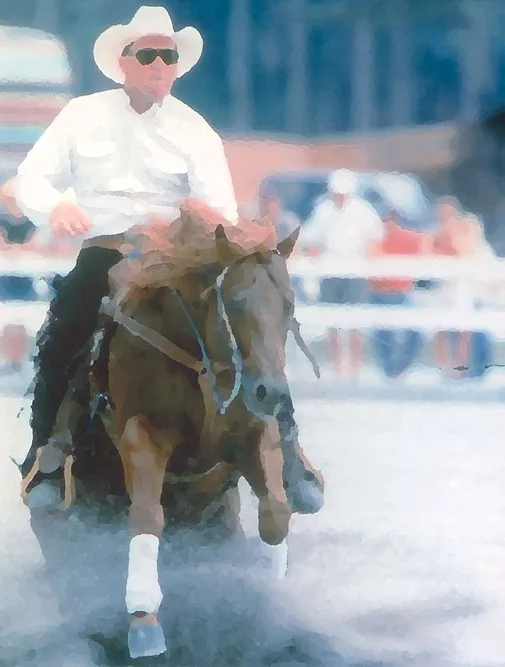WHILE THE SUCCESS of top performing reiners and calf-roping horses depends on their ability to slide, several Oklahoma farriers and trainers maintain there are some distinct shoeing differences.
Shoeing Reiners
With reiners, Doug Carpenter prefers to make shoeing changes slowly. “When you have a shoer that says he can fix that horse today, that scares me,” says the Sulphur, Okla., farrier. “This is normally an 18-month training program and this horse is not going anywhere, so you can do a little bit of shoeing work at a time.
“If I see a stifle or hock problem with reiners, the first thing I do is have the owner take the horse to a vet. I want to make sure I don’t have a soundness problem before I start to shoe.
“Two or 3 weeks after the vet says the horse is OK, we’ll think about what we want to do with the shoeing. But we only consider shoeing options after we know the horse is sound.”
Carpenter likes to start with a 3/4-inch baby sliding plate and then move up to a 1-inch sliding plate as the horse gets older and more experienced as a reiner. He says the key is to have a reining horse that will run straight because a horse can’t slide properly if it leans to one side.
On the front feet, Carpenter prefers lightweight shoes and he often relies on aluminum to keep the horse free, comfortable and running as flat as possible.
“You want to…
